I've been wanting to do some testing of various diffusion techniques for quite awhile now and have finally got around to doing it. The methods I've tested below are by no means the only ways to go about diffusing light. I have yet another technique to test after I receive the material (which should be next week). I tested these diffusing techniques with bicycle headlights in mind. For cycling use, users are generally looking for wide flood combined with some good throw (i.e. a good diffusion technique should widen and brighten the flood without losing tons of throw in the process).
I performed my testing using a typical unmodded MagicShine 808E Clone (the typical "Cree Bike Light" you have seen all over Ebay for years) using an SMO reflector and a 39mm glass lens. I figured many cyclists could relate to this style of light. The light I used is a cool white XM-L which pulls 0.75A from the 2S2P battery pack on high (expect slightly less than 1.5A at the emitter). Note that I also have an O.P. reflector for this light which fits rather sloppy, but it showed very little beam pattern difference from the SMO. My light is a 3-mode (H-L-Strobe) with which I took lux readings on both high and low but only took beamshots on high. The luxmeter I used is the lux meter built into my rebranded Mastech DMM. I don't know that the readings mean much other than being relative to each other. I did NOT take throw measurements with the luxmeter. I also kept the batteries in my 2S2P battery pack nearly fully charged for all photos (lights were only on long enough to take the photo).
The lenses I used during the testing were 39mm from DX (purchased from DX Soul - the expedited US shipping site). I did NOT test each bare lens before applying the diffusion technique (in retrospect I guess I should have done so). The DX lens did test better than the original glass lens which came with my light (i.e. less light loss).
Captions are shown above the photo they pertain to. If my photos do not show up, they can be viewed here.
Here are photos showing the various techniques I used:
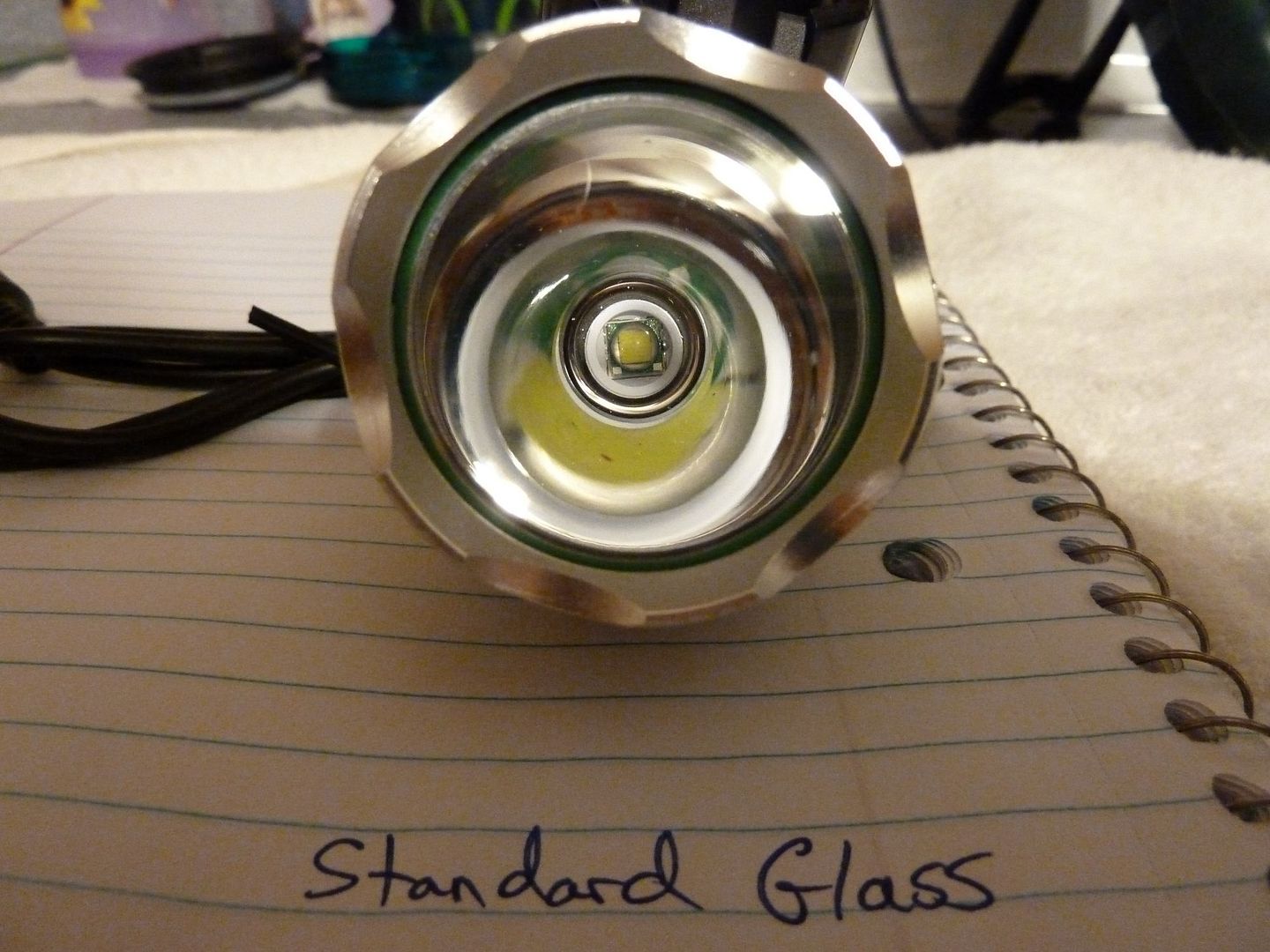
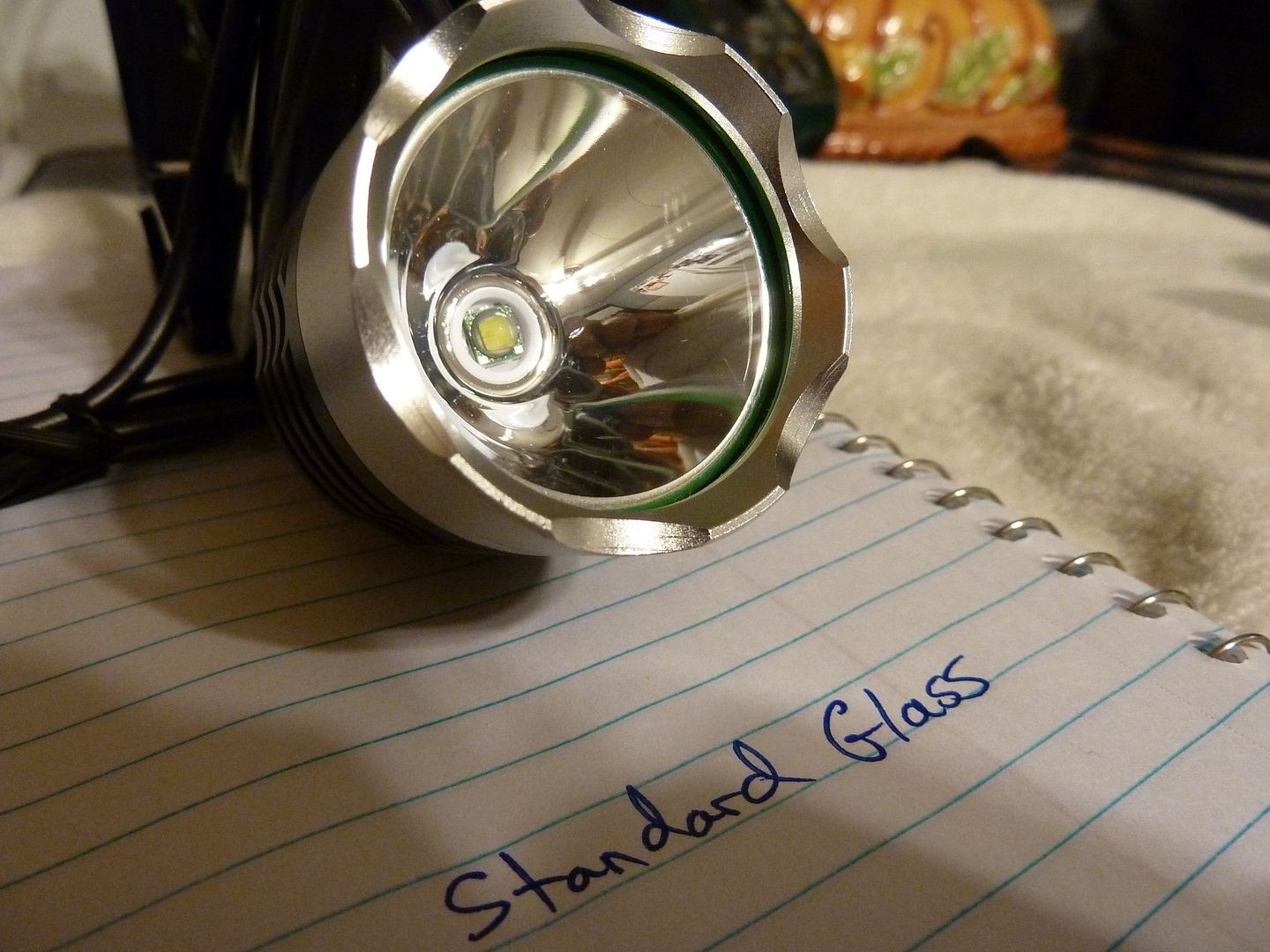
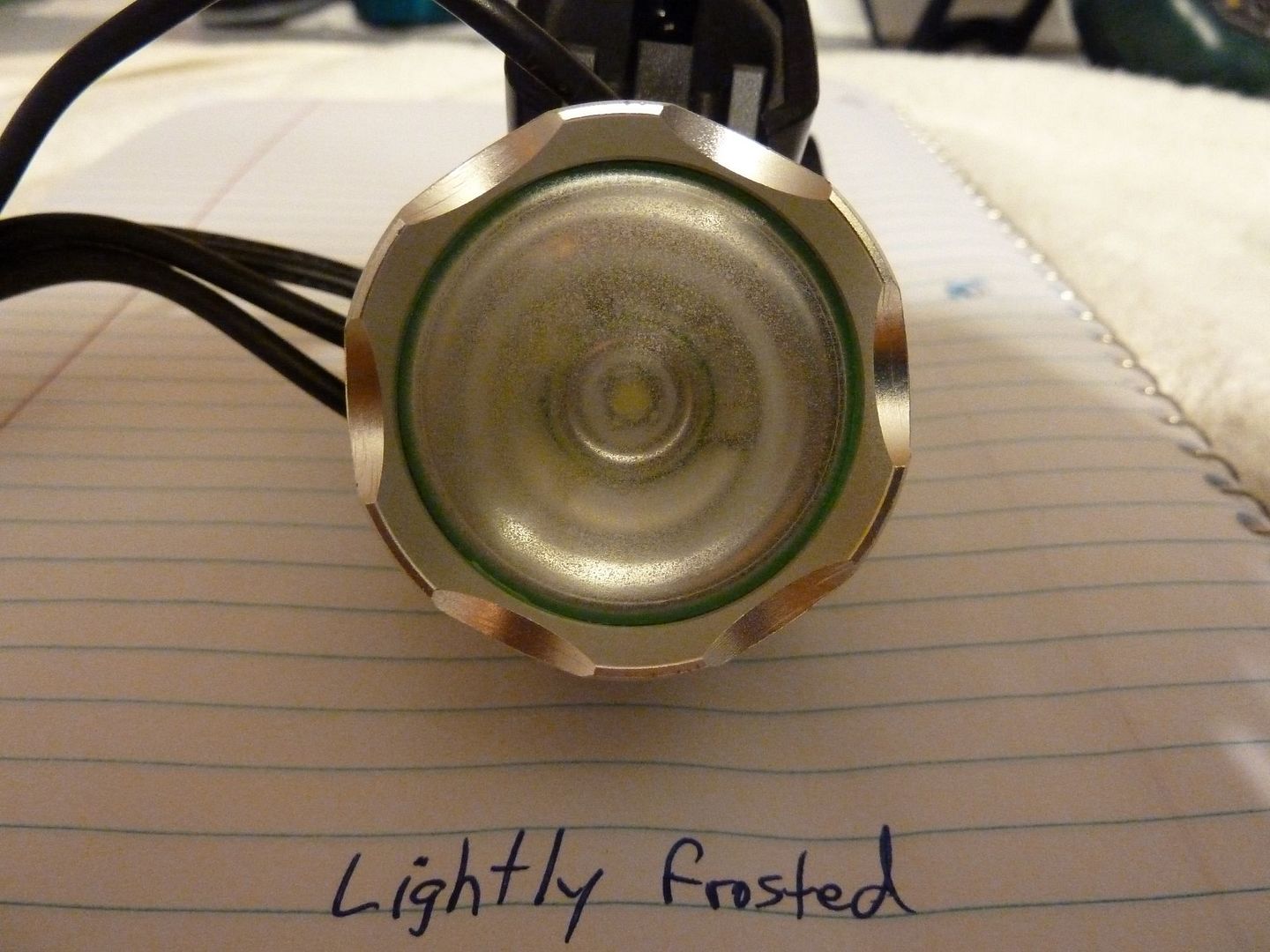
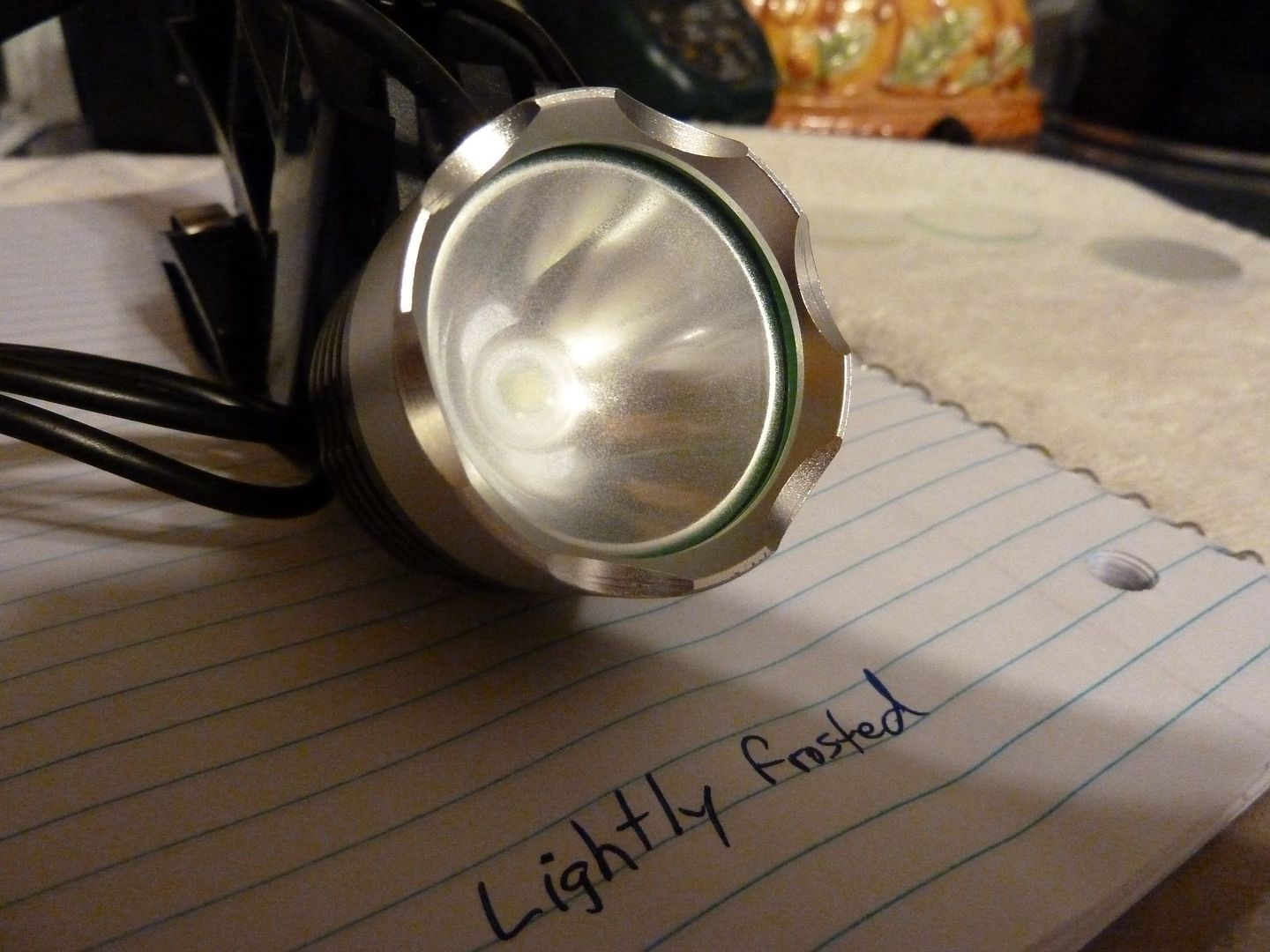
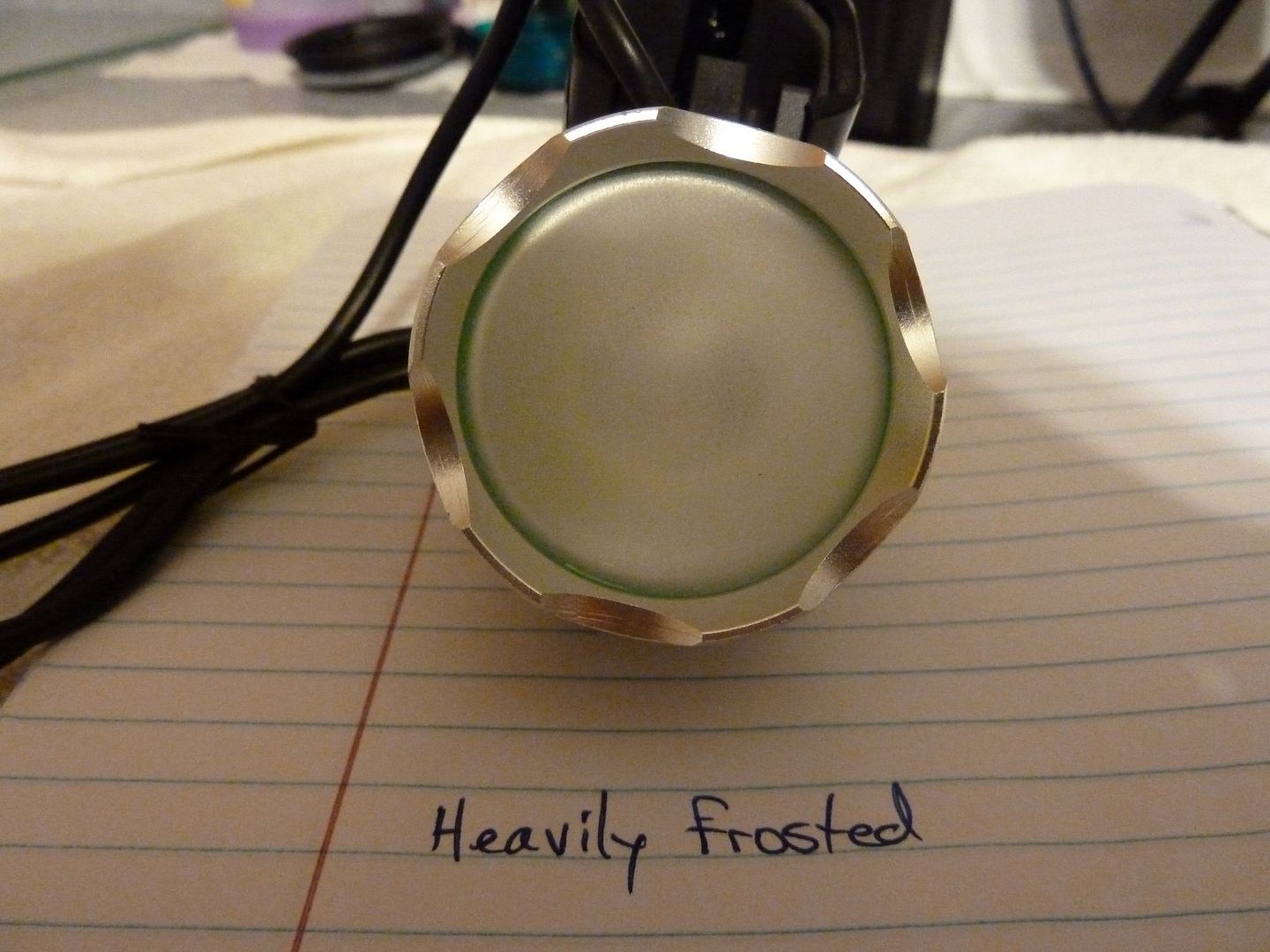
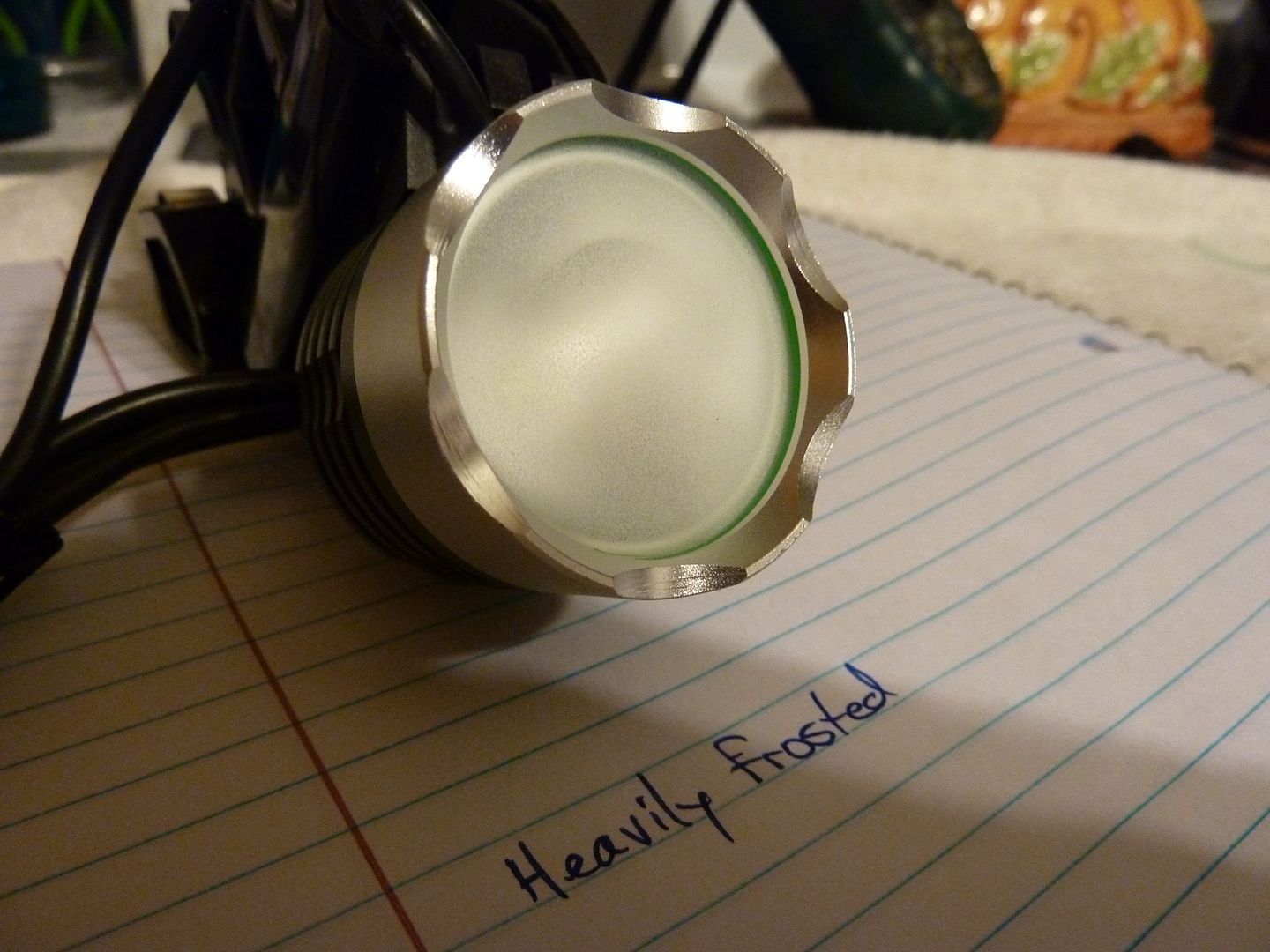
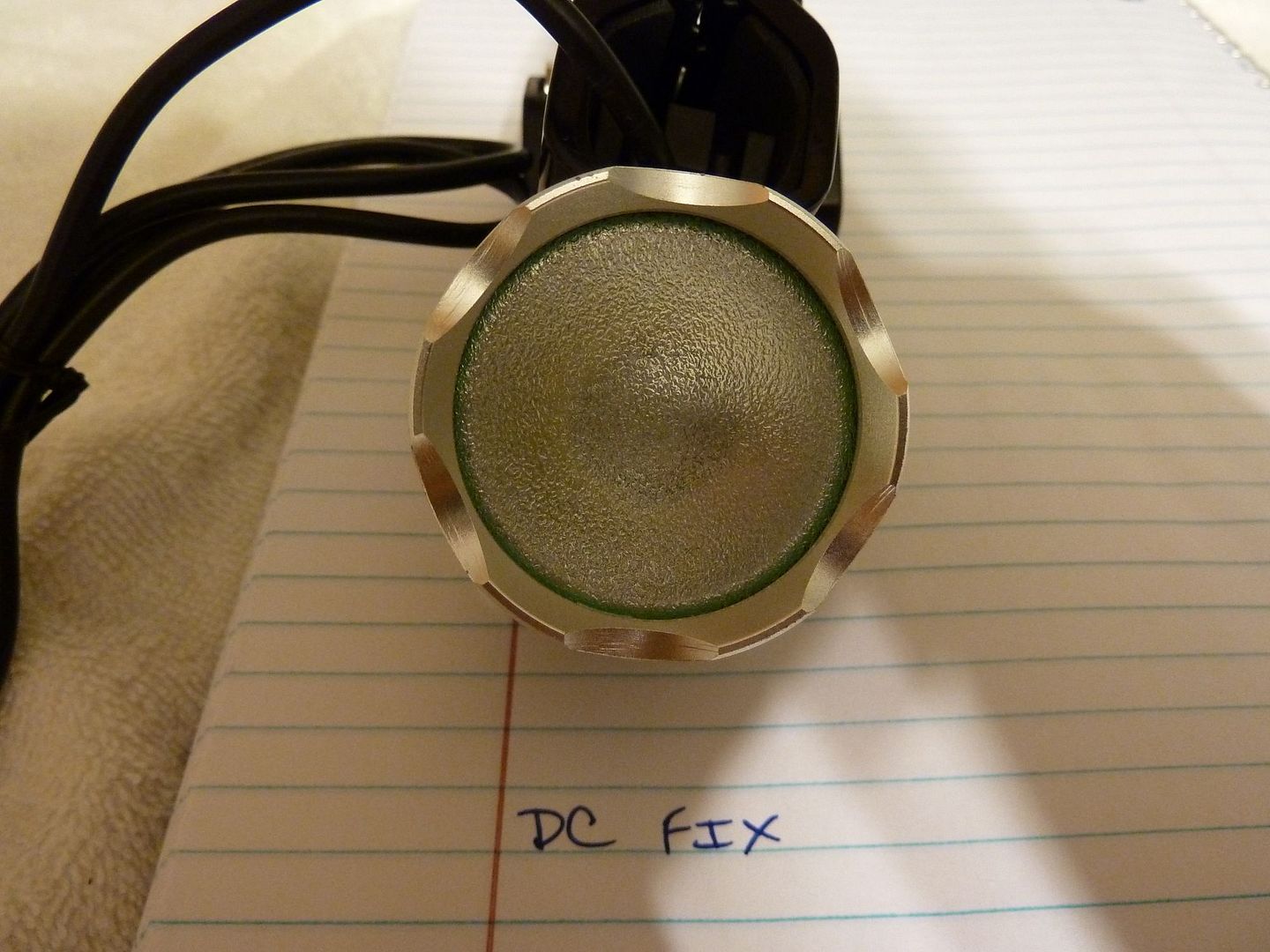
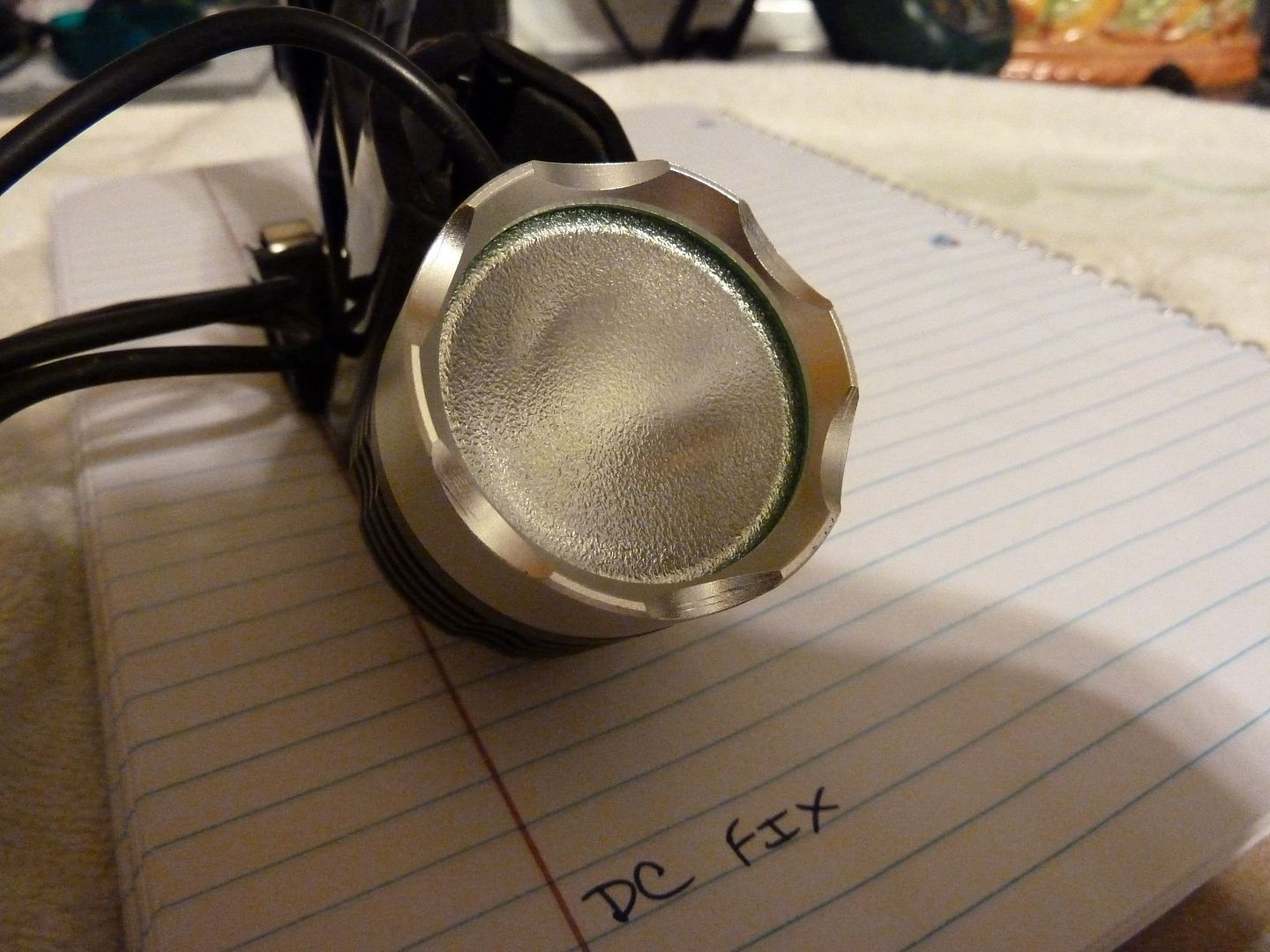
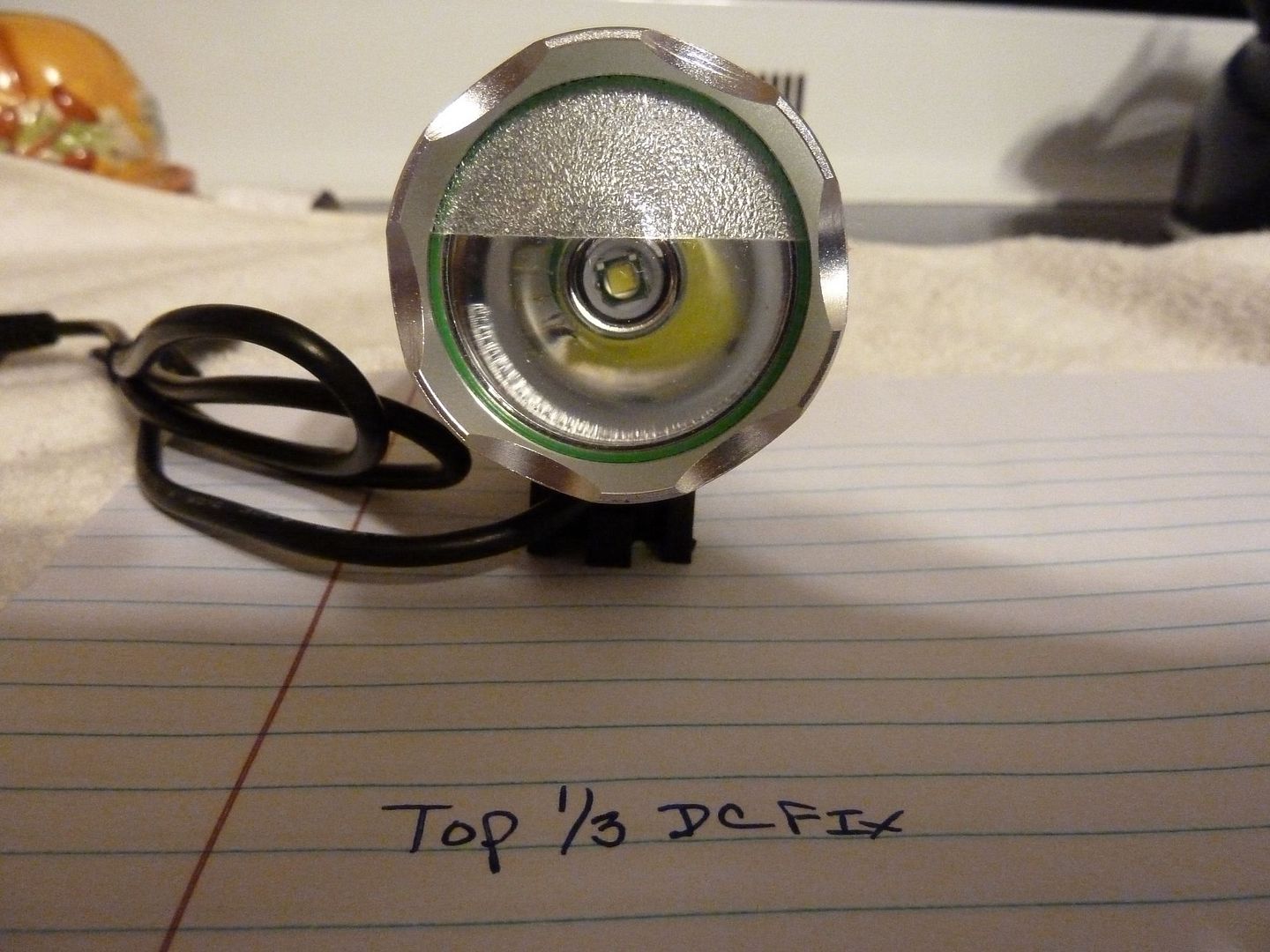
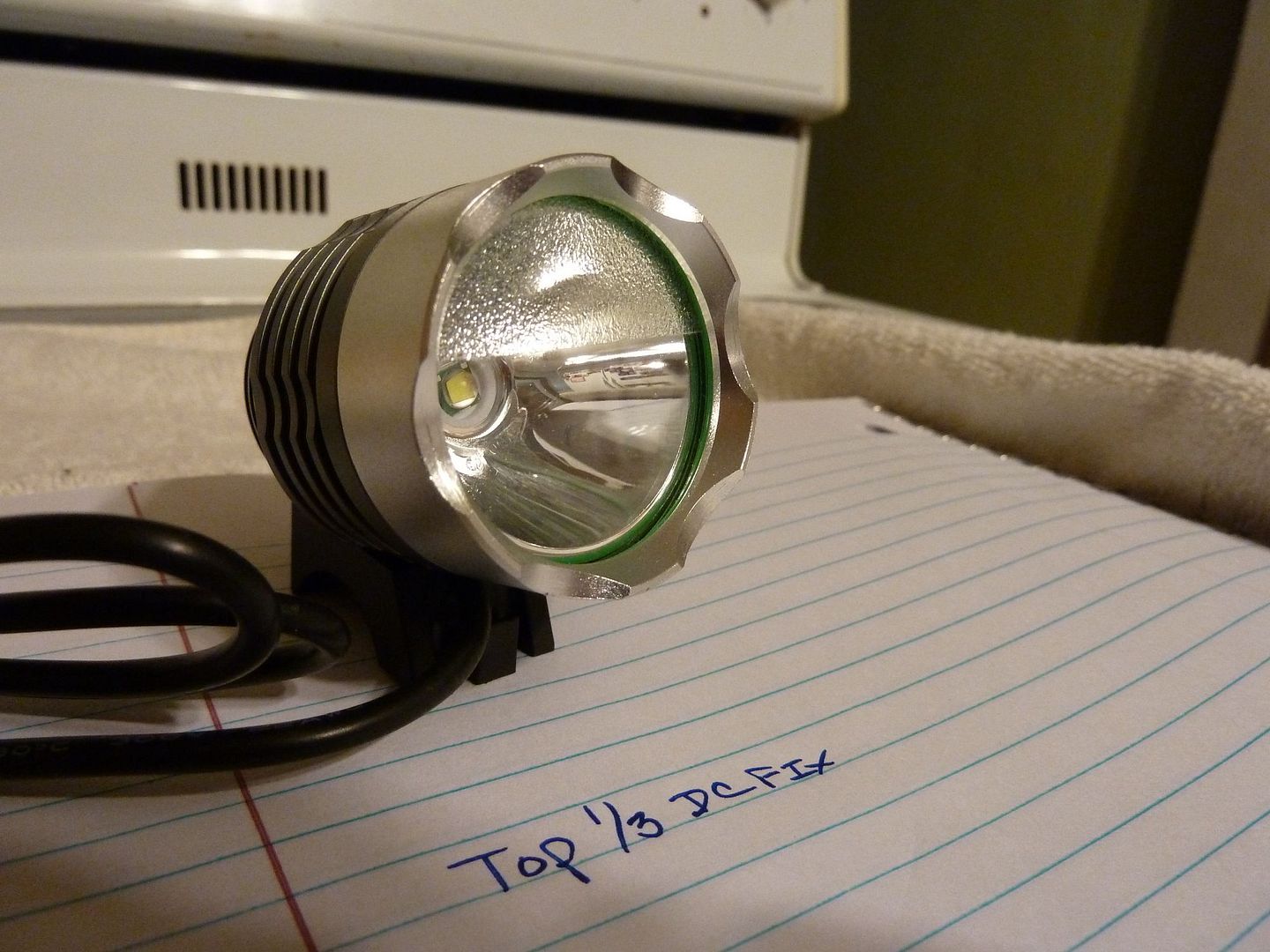
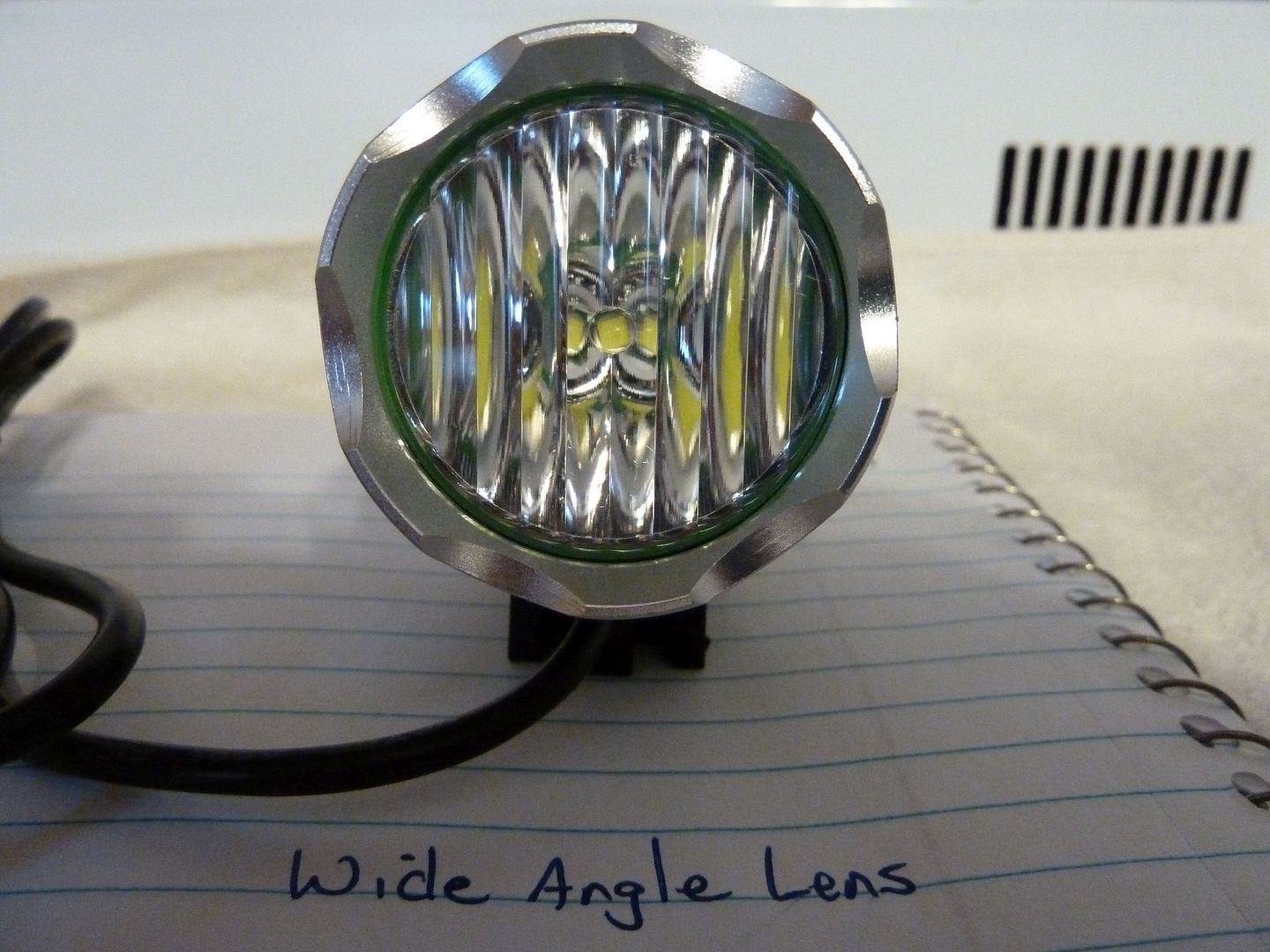

The "Lightly Frosted" and "Heavily Frosted" refer to the use of Krylon Glass Frosting Spray. I recently shared a mod of a 4AA Rayovac lantern on which I used glass frosting spray to dramatically improve the beam (see that thread for before and after photos). The "Wide Angle Lens" is this one purchased from Action LED Lights. According to an MTBR post by Jim Harger of Action LED, the wide angle lens is made of "optical grade polycarbonate" and "clear as glass". I got the idea to try the DC Fix on the upper one-third of the glass from this MTBR thread. The DC Fix is the "sand" type available here or from sellers on CPF and BLF.
My test setup was extremely complicated and painstaking! Here are some photos:
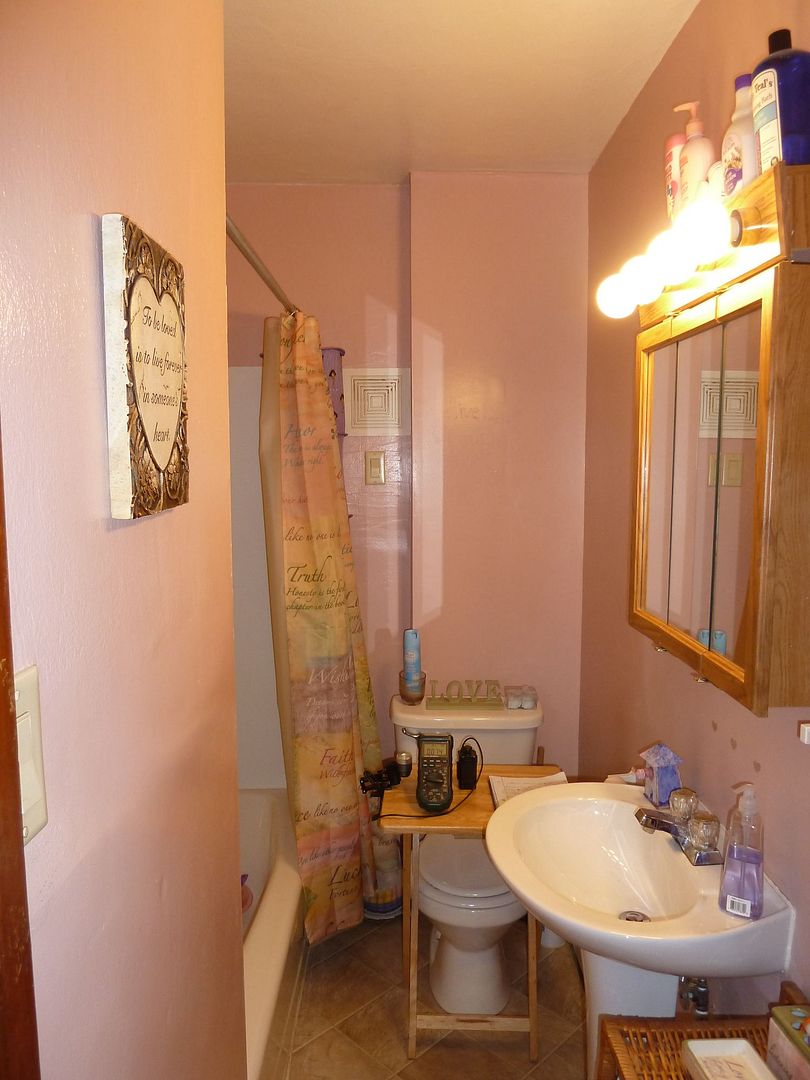
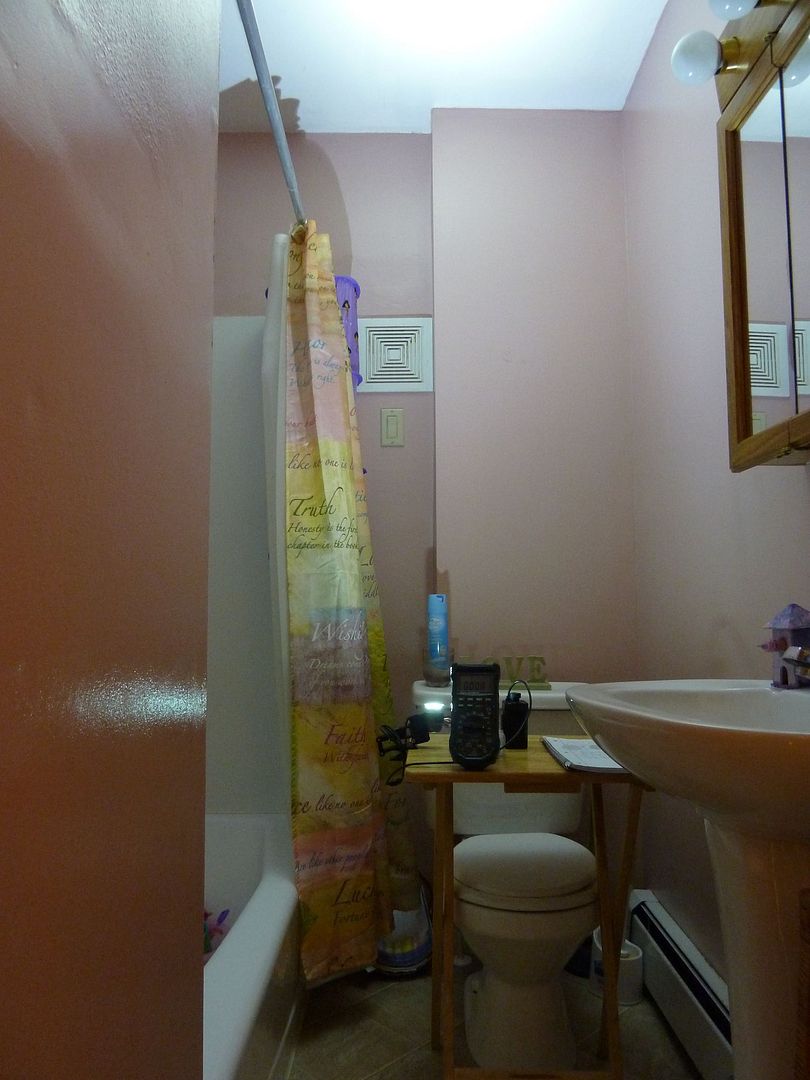
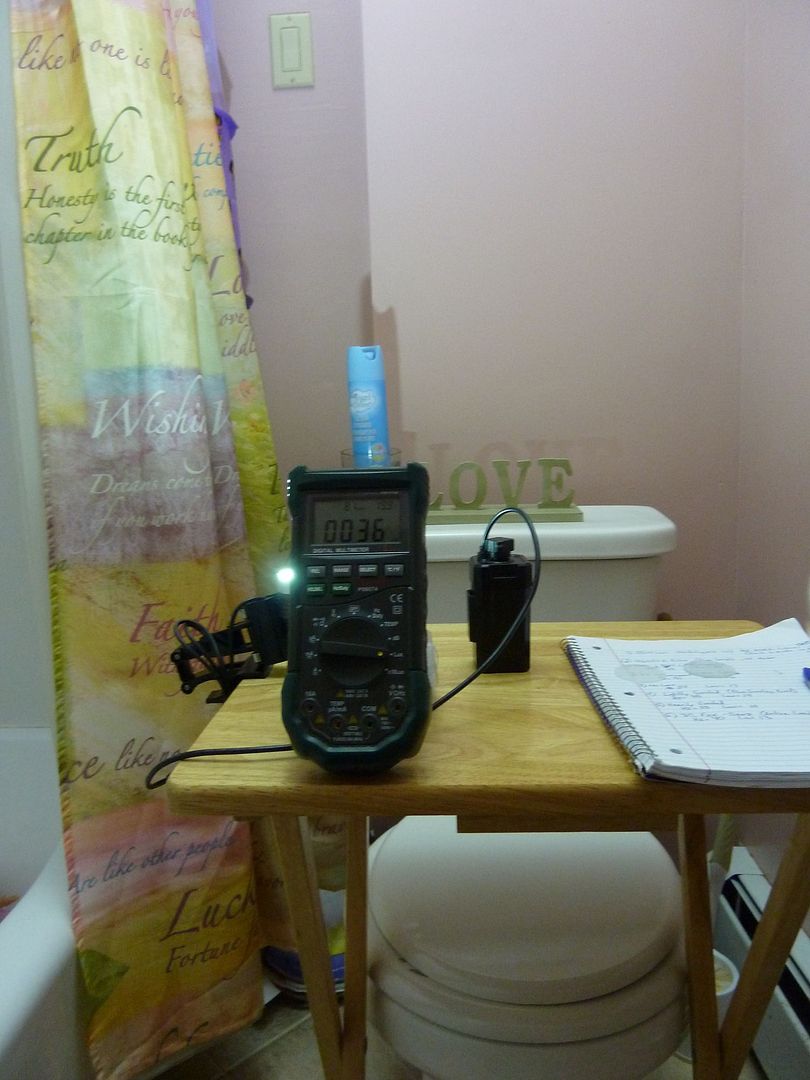
Ok, it wasn't so complicated. :) As you can see I used a bathroom which has no windows and allows me a room of complete darkness to measure in. The light remained mounted at the same location for each measurement. I would hold the meter in my hand, leaving the bottom on the table and point it toward the center of the beam (I would actually rock it slightly until I had the highest reading). The table is exactly 6 feet below the ceiling.
Here are my lux reading results:
Lens High Low %Transmittance on high (as Compared to "no lens")
No Lens 54 17 100%
(reflector only)
Original Glass 49 15 91%
DX Glass 51 16 94%
Lightly Frosted 45 14 83%
Heavily Frosted 33 10 61%
DC Fix (Entire) 40 13 74%
DC Fix (Top 1/3) 48 15 89%
Wide Angle Lens 49 15 91%
White wall ceiling shots with the light 5 feet from the ceiling (manual white balance, aperture @ f3.3, shutter @ 1/25th of a sec.):
Standard Glass Lens:
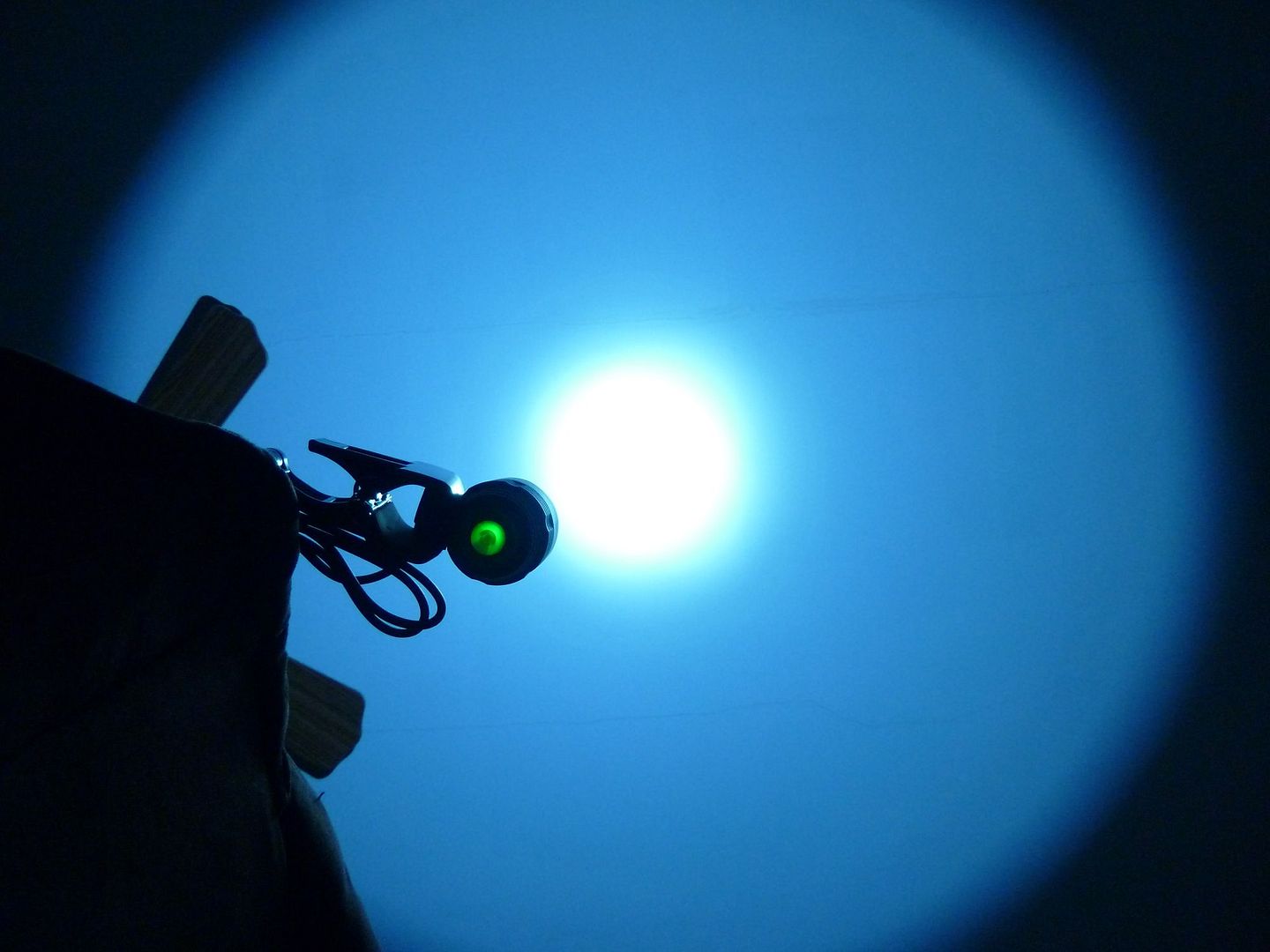
Lightly Frosted:
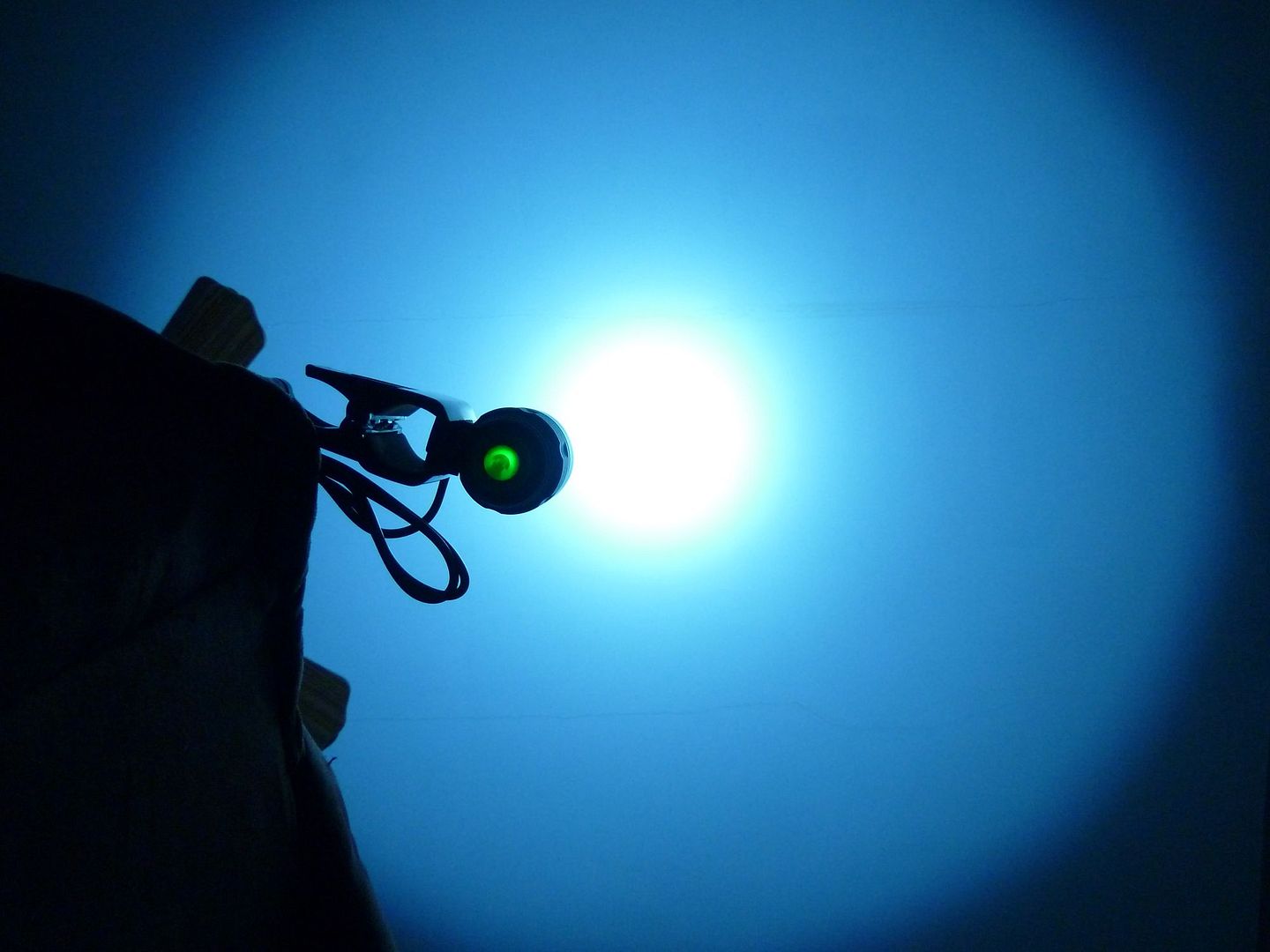
Heavily Frosted:
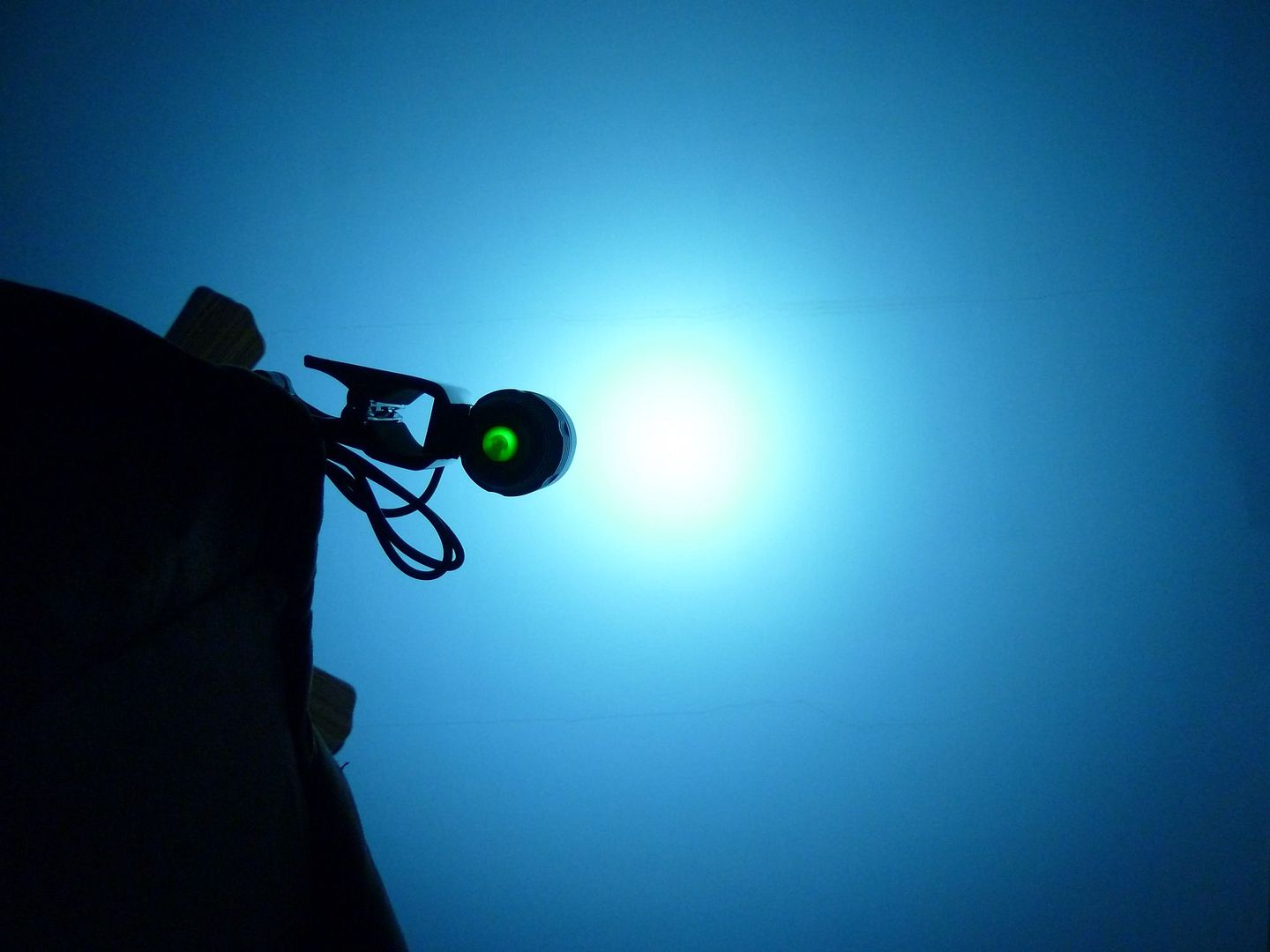
DC Fix (Entire Lens):
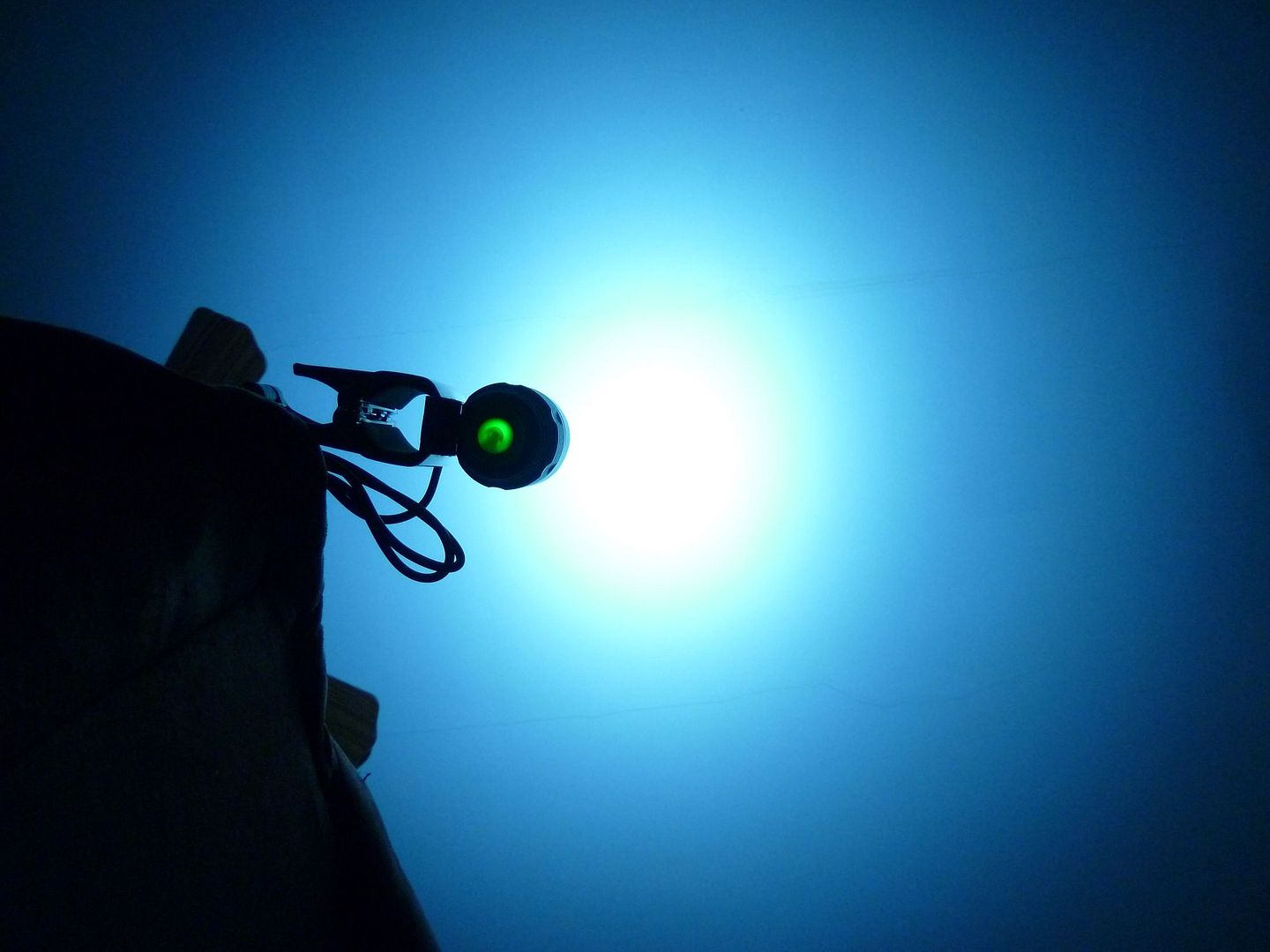
DC Fix - Upper 1/3 of Lens:
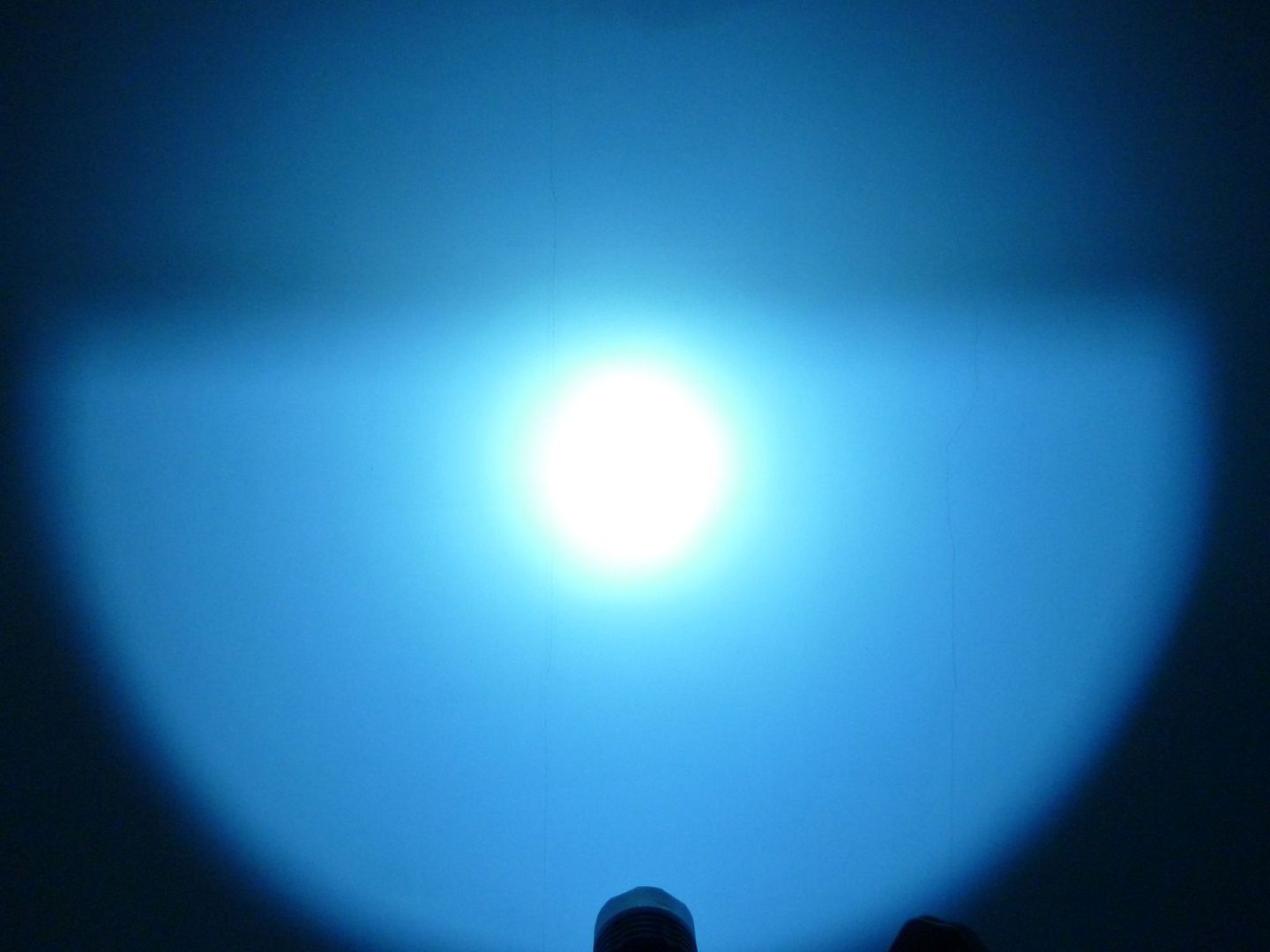
Wide Angle Lens:
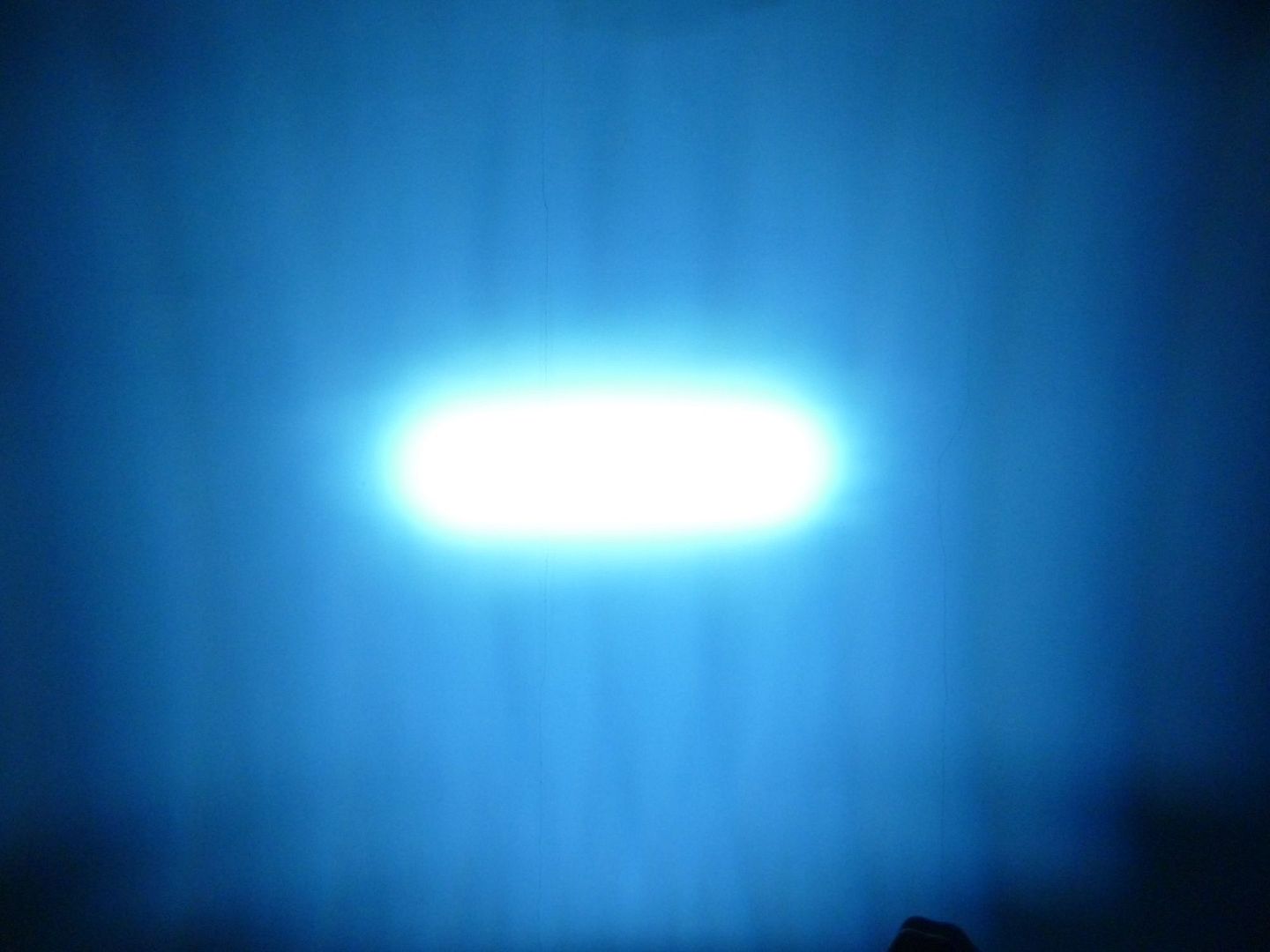
I then took outdoor beamshots of each lens and tried my hardest to keep the light mounted in the same exact position and aimed at the same location (which was the bottom edge of the garage roof between the two trees). Distance to the trees are approx. 185 feet. Approx. 275 feet to the house off to the left of the trees (unsure of distance to the garage). Camera settings are the same that I have been using lately for outdoor beamshots - white balance set to manual "incandescent", aperture @ f/3.3, shutter @ 1/1.6 sec, ISO 400 (photos are just slightly dimmer from what I see in reality)
Standard Glass:
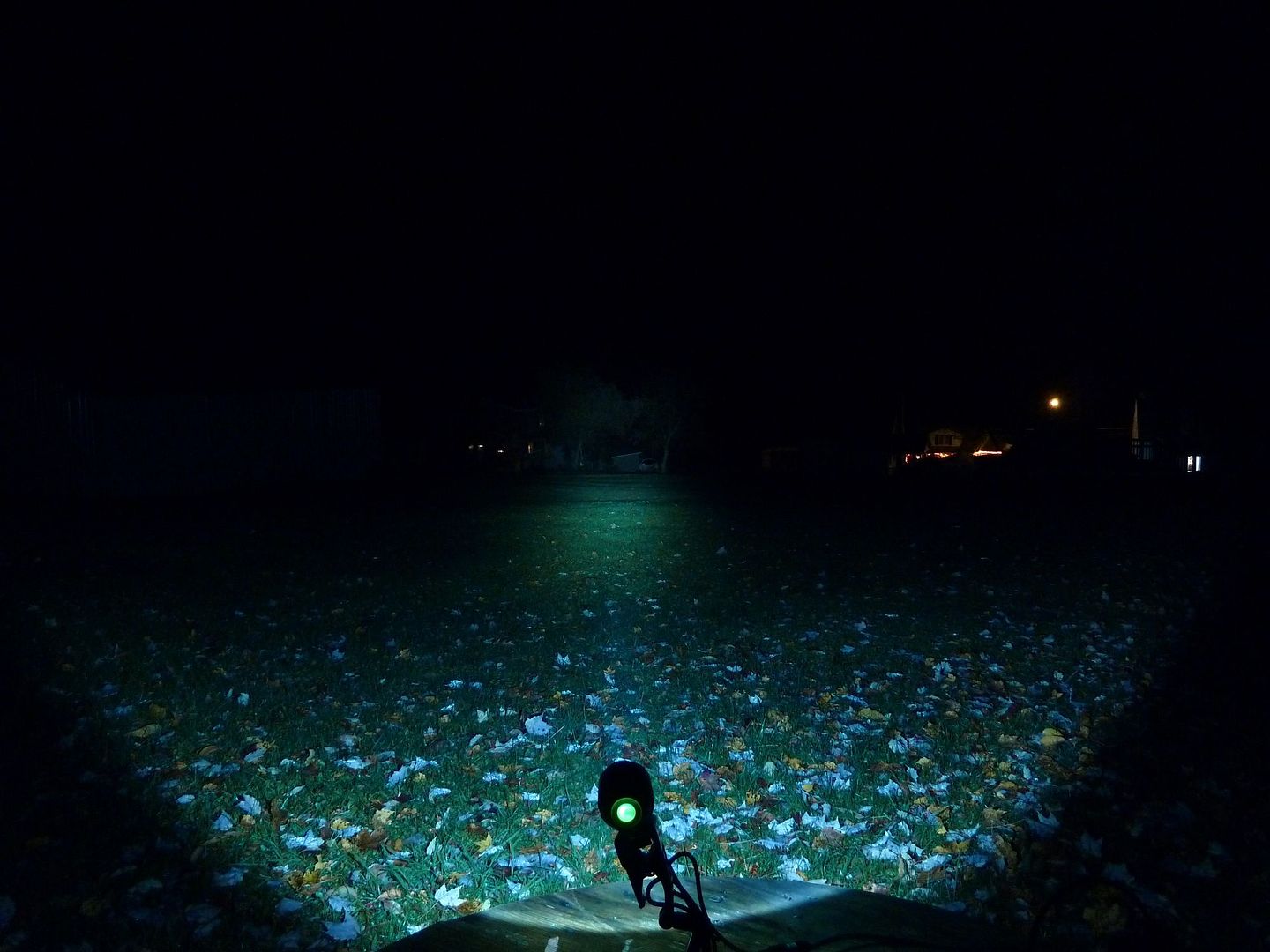
Lightly Frosted:
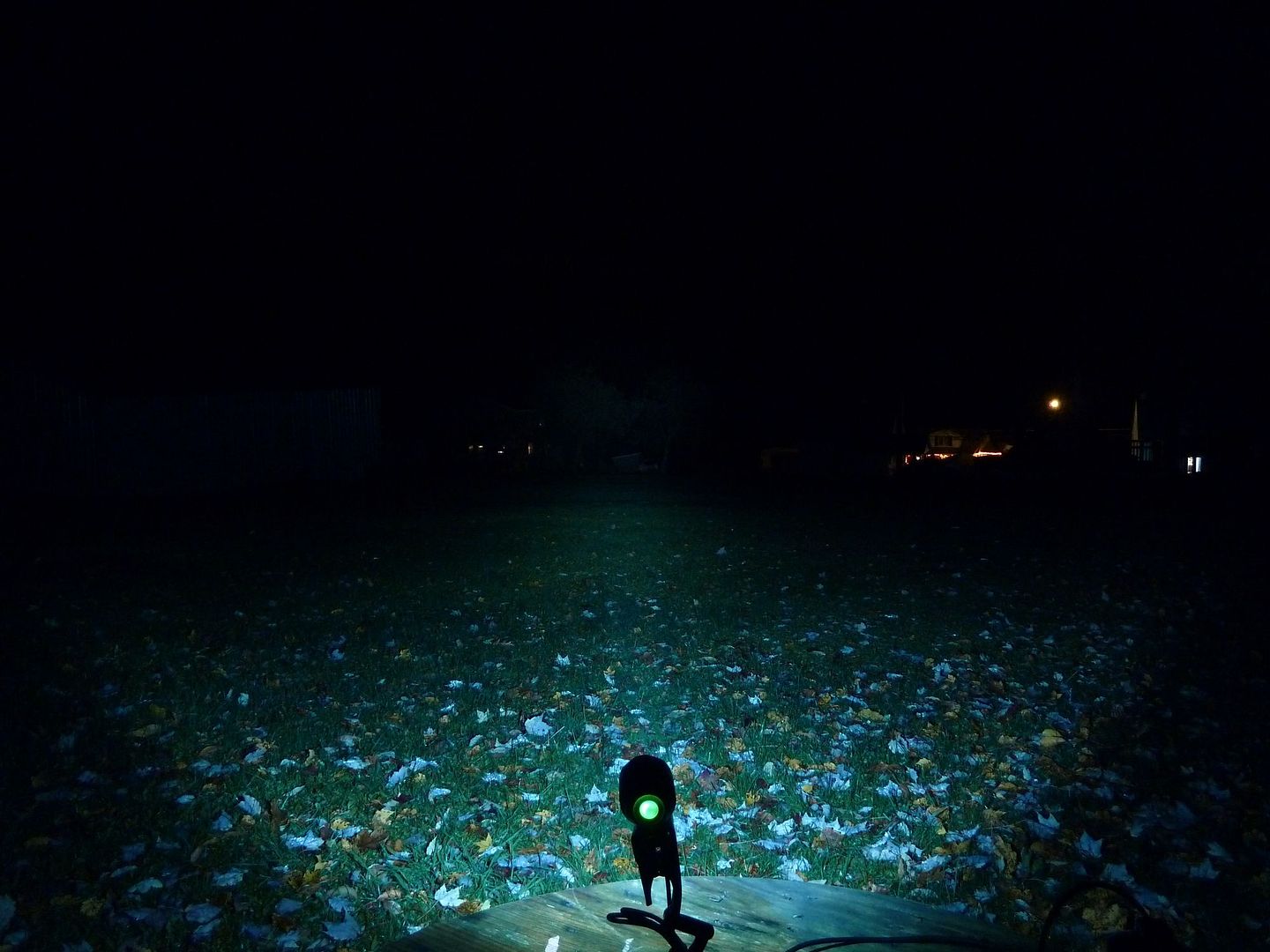
Heavily Frosted:
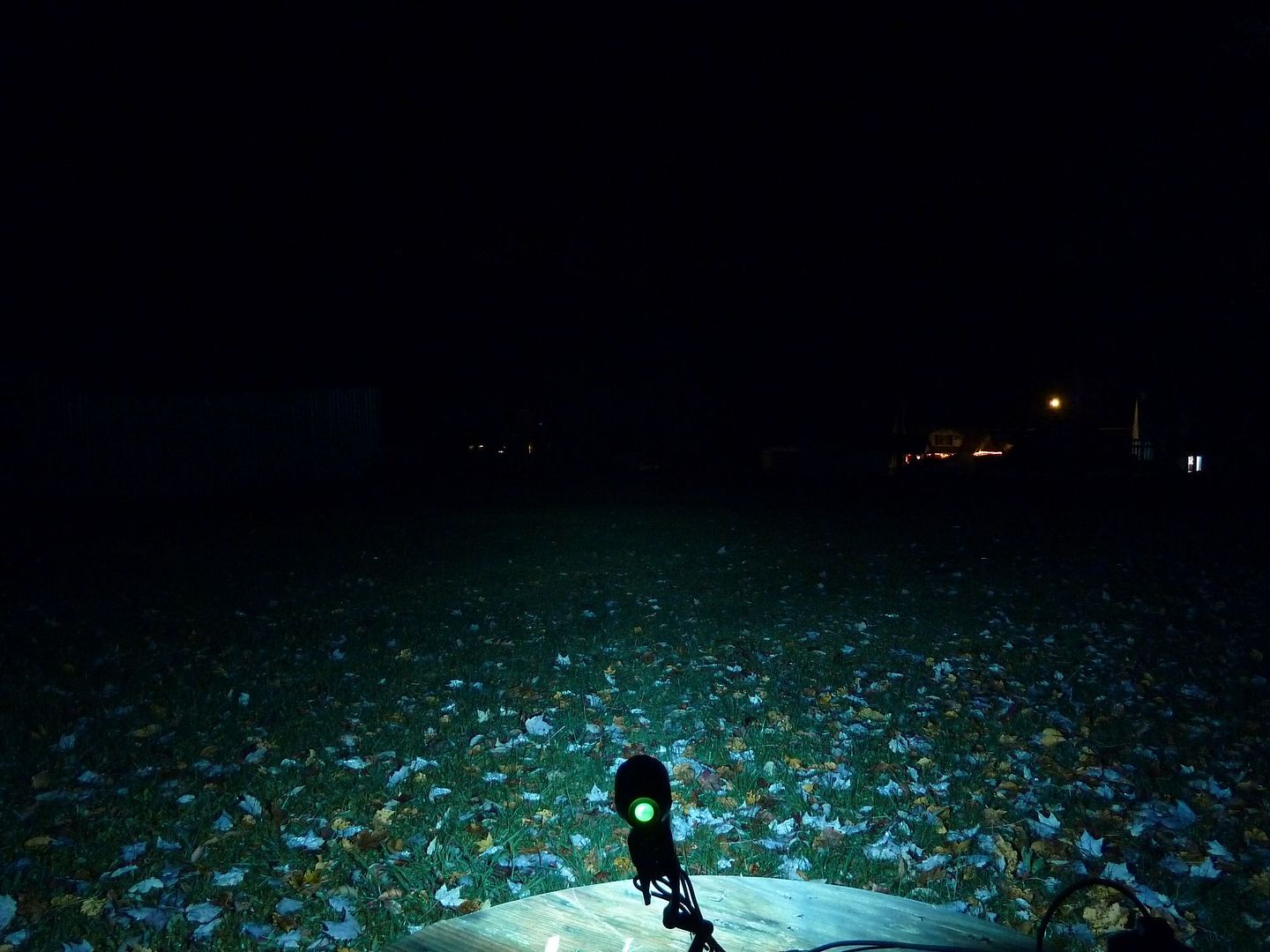
DC Fix (Entire Lens):
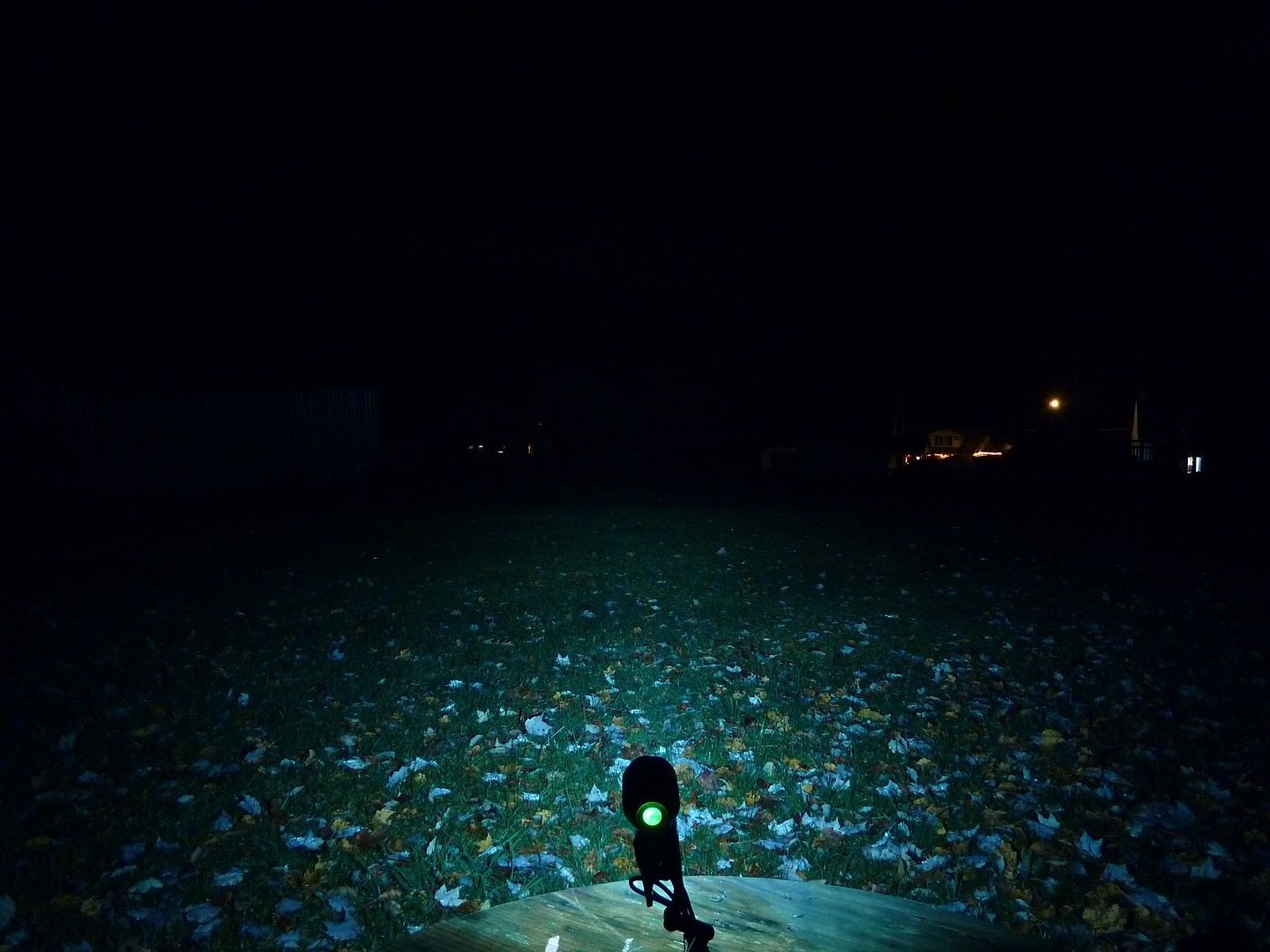
DC Fix - Upper 1/3 of Lens:
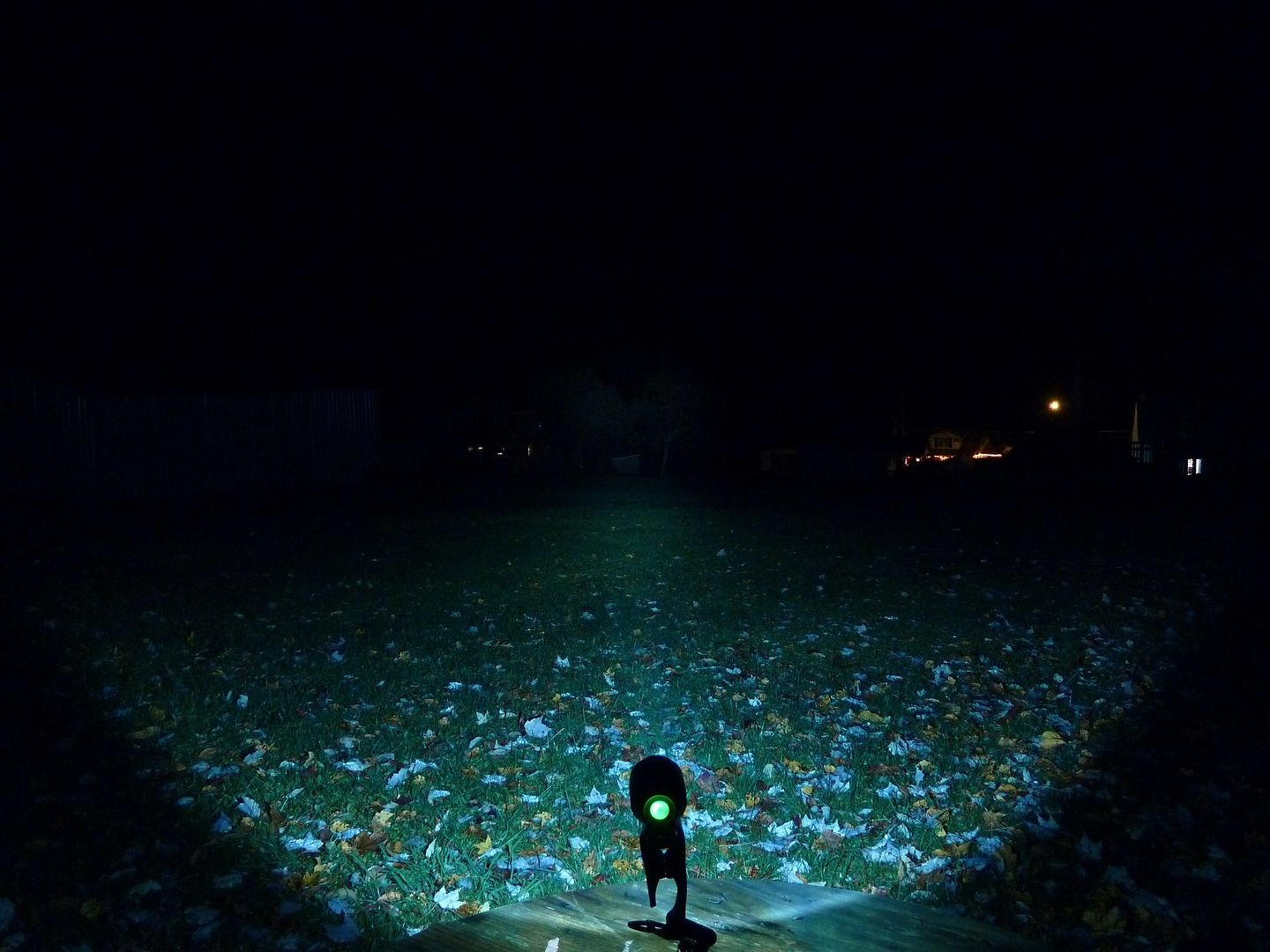
Wide Angle Lens:
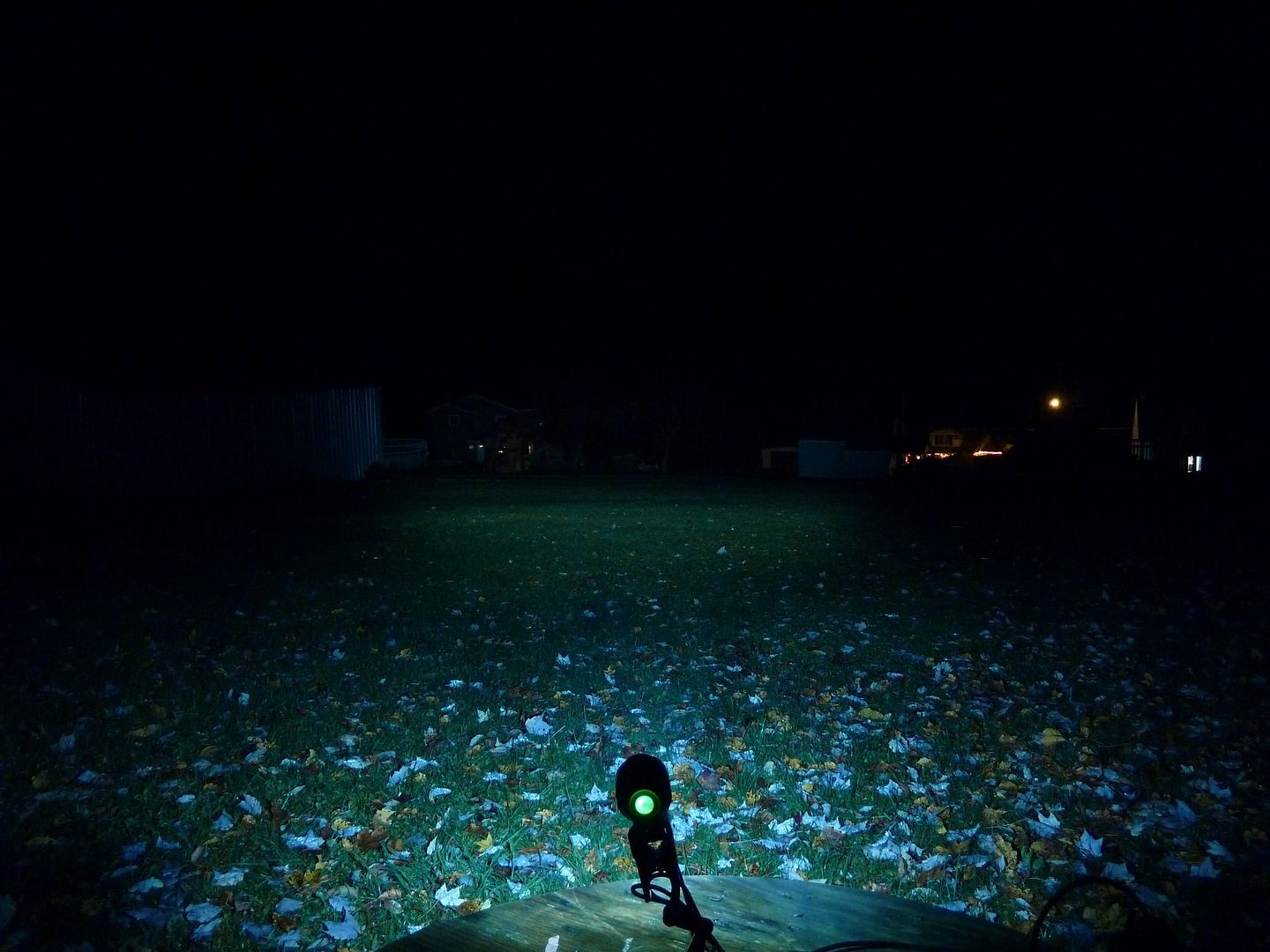
And just for siata94, my mule headlamp, an XM-L2 T5 5B1 driven at 1.4A:
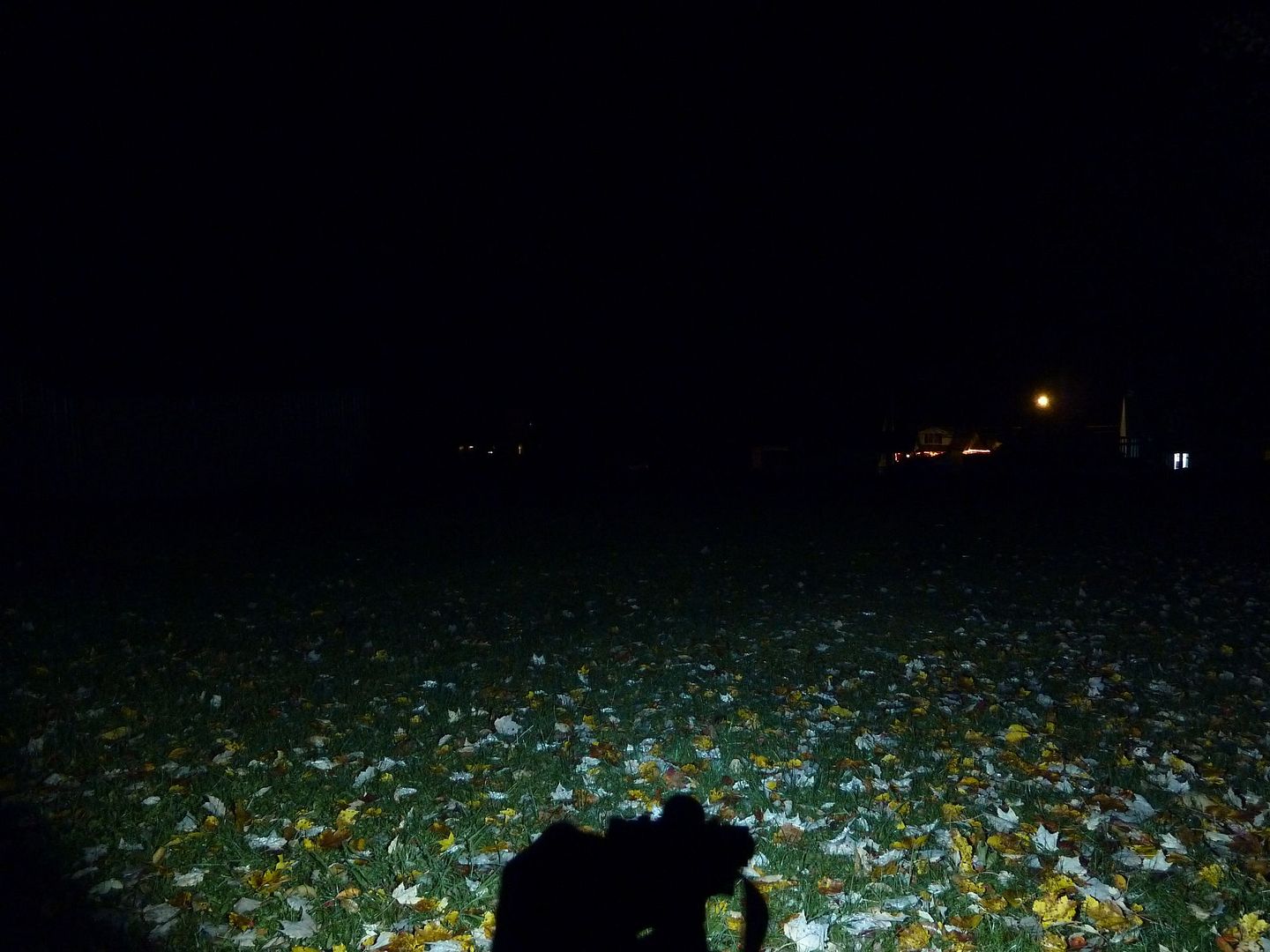
Just look how washed out those leaves look with the cool white light compared to this one! siata94 asked me (back in March I believe) about the amount of throw from my mule headlamp, so I decided to show it here. Perhaps a dual or triple XM-L/2 light with one or two mules and one or two left for throw would be a good combination. This brings up a good point; I was testing how to change (diffuse) beam patterns on a single emitter light. The next step (which I acquired lenses for but don't think I will have to time to complete) would be to diffuse some of the output from a multi-emitter light. I have a SolarStorm X3 (3 emitter side by side) with which I had contemplated diffusing the outer two lenses on.
I don't have time to do a lot of mouseovers right now, but here are a few:
Mouse Out=Wide Angle Lens, Mouse Over=DC Fix Upper 1/3:

Mouse Out=Standard Glass Lens, Mouse Over=Wide Angle Lens:

Mouse Out=DC Fix (Entire Lens), Mouse Over=Lightly Frosted:

Mouse Out=DC Fix (Entire Lens), Mouse Over=DC Fix Upper 1/3:

-Garry
